Korea has been called the “silk-embroidered land of three thousand-ri” or the “land of morning calm” for its beautiful and picturesque landscape, and the “eastern country of good manners” for the kindness of its people.
From the first day of its founding, the Democratic People’s Republic of Korea has pursued an active policy for development of tourism under the ideal of independence, peace and friendship, regarding the international tourist industry as an important work which would contribute to promoting mutual understanding and cultural bond between peoples around the world and developing the national economy.
On August 24, Juche42 (1953), less than a month after the ceasefire of the Korean war, the DPRK government founded the Korea International Travel Company for the purpose of developing international tourism.
Between the 1960s and the 1980s, the world-famous Mts. Kumgang and Myohyang and other celebrated mountains and scenic spots were developed into tourist destinations, the tourist highway from Pyongyang to Wonsan opened to traffic, and such service facilities as Pyongyang Koryo Hotel and Hyangsan Hotel were built.
Between the 1990s and the 2000s when an acute political and military standoff prevailed on the Korean peninsula, the DPRK government promoted the work to develop tourism, with the result that the areas in Mts. Paektu, Chilbo were developed into wonderful tourist destinations. In this period Pyongyang-Hyangsan tourist highway and Pyongyang-Kaesong motorway opened to traffic, and other tourist service facilities such as Yanggakdo International Hotel were newly built or renovated.
Today the tourist industry in the DPRK is developing afresh.
Recently, Masikryong Ski Resort and Masikryong Hotel have been built in the Masik Pass area on the eastern coast of the country as well as the Munsu Water Park and Mirim Riding Club and other facilities for cultural and sports tourism. Also Pyongyang International Airport was finely renovated.
Vigorous efforts are being made to spruce up such celebrated mountains as Paektu, Chilbo and Kumgang and the scenic spots on the eastern and western coasts and provincial tourist resorts in a distinguished way. New tour itineraries are being developed in a bid to link the tourist areas.
In order to fully ensure the traffic convenience of in-bound tourists from many countries and regions, efforts are now directed to opening accesses including new air and sea routes. The DPRK government welcomes foreign investment in developing the tourist attractions of the country and the construction of infrastructures for tourism. It is also taking positive measures to preferentially treat and protect foreign investment enterprises.
For the purpose of developing tourism in close cooperation with international bodies, the DPRK joined the World Tourism Organization (UNWTO) on September 22, Juche76 (1987) and the Pacific Area Tourism Association (PATA) on May 14, Juche84 (1995).
The main tourist attractions include the major cities such as Pyongyang, the capital of the DPRK, Kaesong, Wonsan, Hamhung, Nampho, Sariwon, Sinuiju and Chongjin, and celebrated mountains and scenic spots such as Mts. Paektu, Myohyang, Kumgang, Chilbo and Kuwol, and Masikryong Ski Resort, Ullim Falls and Songdowon.
In Pyongyang, tourists witness the real looks of Korea through visits to the edifeces only in the DPRK such as President Kim Il Sung's birthplace at Mangyongdae, Tower of the Juche Idea, Arch of Triumph, Grand People’s Study House, Mangyongdae Schoolchildren’s Palace, the Victorious Fatherland Liberation War Museum and Pyongyang Metro.
Through colourful recreation activities including walking on beautiful Moran Hill, one of the eight famous scenes of Pyongyang, visits to the mausoleums of King Tangun and King Tongmyong and other historical relics, People’s Theatre, Pyongyang Circus House, Pyongyang Grand Theatre, Korean Art Gallery and other theatres and museums, and enjoyment at the Central Zoo and Natural History Museum , Munsu Water Park, Rungna People’s Recreation Ground and Kaeson Youth Park, they can see the beautiful sceneries of Pyongyang, understand the long history and the splendid culture and art, and experience the cheerful life of the Korean people.
In Mt.Paektu area they enjoy such natural wonders as the sublime landscape of the ancestral mountain and visit Chairman Kim Jong Il’s native home in the Paektusan Secret Camp and other revolutionary battle sites and revolutionary sites, which vividly showcase the 20-year-long history of the arduous anti-Japanese revolutionary struggle commanded by President Kim Il Sung.
In Kaesong, a city of historical culture, they visit Koryo Museum, and the mausoleums of King Wang Kon and King Kyonghyo (Kongmin), Ryongthong Temple and other historical relics, which have been registered as the World Cultural Heritages, to have a rich knowledge of the time-honored history and culture of the Korean nation that made great contributions to the development of the world culture and history.
Visiting Panmunjom and the Concrete Wall they will keenly feel the sufferings experienced by the Korean people due to the national division forced by outside forces.
In Mt. Myohyang area, they visit the International Friendship Exhibition House, which preserves the gifts presented to President Kim Il Sung, Chairman Kim Jong Il, the respected Comrade Kim Jong Un and anti-Japanese war heroine Kim Jong Suk by the world people from the five continents, Pohyon Temple, a typical Buddhist temple of Korea built in the early 11th century, and Ryongmun Cavern which presents mysterious underground sceneries. And they may go hiking to Manphok Valley and Sangwon Hermitage in Mt.Myohyang.
In Wonsan area, they enjoy sightseeing Ullim Falls, go skiing at the well-furnished Masikryong Ski Resort, go sea-bathing in Songdowon, Myongsasimni and other beautiful sand beaches on the East Sea of Korea.
In Mt.Kumgang, they can go mountaineering and sightseeing to Kuryong Pool, Manmulsang, Lagoon Samil and other scenic places, feasting their eyes on the beautiful natural sceneries to their heart's content.
In Mt. Chilbo-Chongjin area, they can relish the beauty of valleys and peaks of Mt. Chilbo, enjoy at the seashore and go spa-bathing, and visit several places of culture in the city of Chongjin.
In the areas of Nampho, Sariwon and Mt. Kuwol, they tour the West Sea Barrage and the places of historical and cultural importance such as the Three Tombs of Kangso (7th century A.D.) and Mural Tomb in Tokhung-ri (5th century A.D.) registered as the World Cultural Heritages, and enjoy the beautiful sceneries of Mt. Kuwol.
In Sinuiju area, they visit several historical relics and educational and cultural establishments.
The tour of the DPRK varies in tour itineraries from one day to over 14 nights. In recent years, the demand for DPRK tour is on the increase. Various theme tours such as cultural tour, sports tour, tour for aircraft enthusiasts and cycling tour, in particular, are popular among tourists. A variety of itineraries in the cultural tour include the enjoyment of performances given by the National Symphony Orchestra and the art squads of schoolchildren, operas and acrobatics; the visits to history museums and historical relics, Mansudae Art Studio, and Korean Art Gallery and trying of the Korean traditional food and the national customs. Such itineraries appeal to the tourists who are deeply intrested in culture and history of Korea. Such itineraries appeal to the tourists who are deeply interested in the culture and history of Korea.
Mountaineering in Mts. Paektu, Myohyang, Kumgang and Chilbo; watching and participating in several international sports games in the DPRK; playing friendly matches with local amateurs; visit to several kinds of aircrafts, and getting flights by aviation enthusiasts; and cycling in different parts of the DPRK while feasting their eyes on the picturesque mountains and rivers—these itineraries of the sports tour help tourists enjoy the natural sceneries and satisfy their own tastes in sports. While visiting cooperative farms, stock-breeding farms and factories, they can witness the Korean people who have turned out in the drive to build a Socialist thriving nation. This is also popular among tourists.
Tourists are offered a high level of guiding service in English, Chinese, Japanese, Russian, German, Spanish and French as well as good traffic service.
The National Tourism Administration of the DPRK is making active efforts to provide excellent services for all people who hope to visit the country. It will, in future, too, continue to make persevering efforts so that more and more tourists can have a pleasant time during their stay in the DPRK.
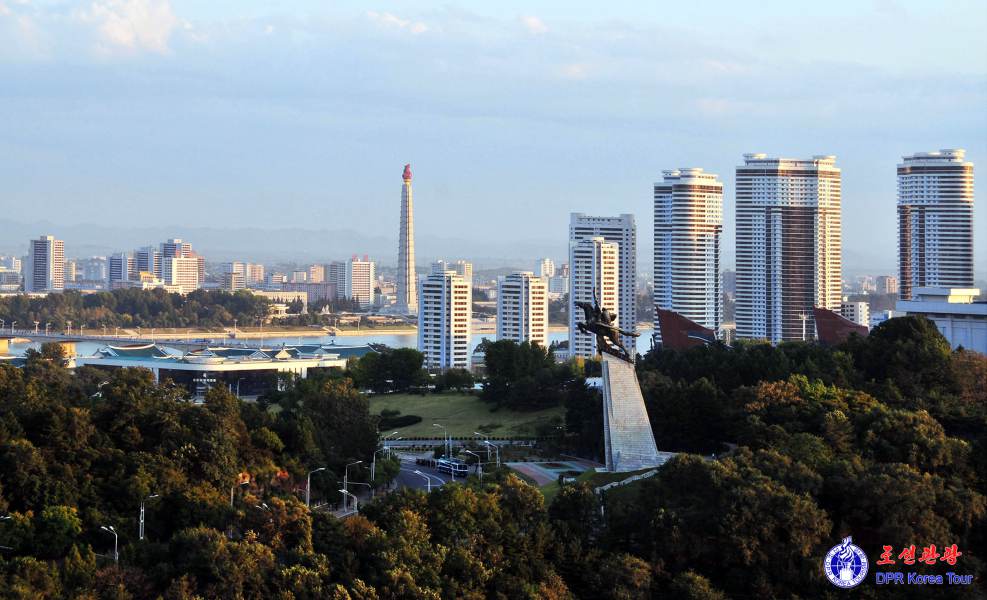
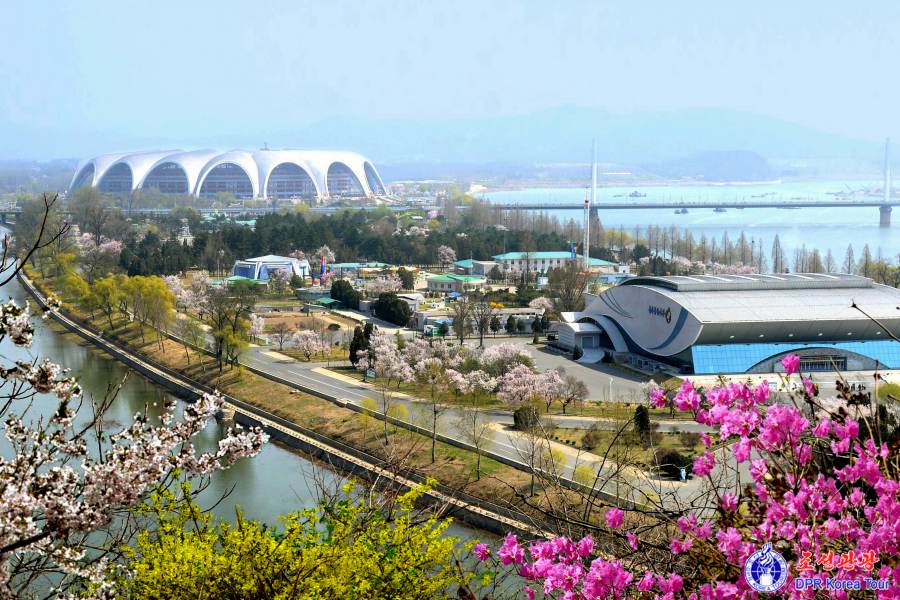


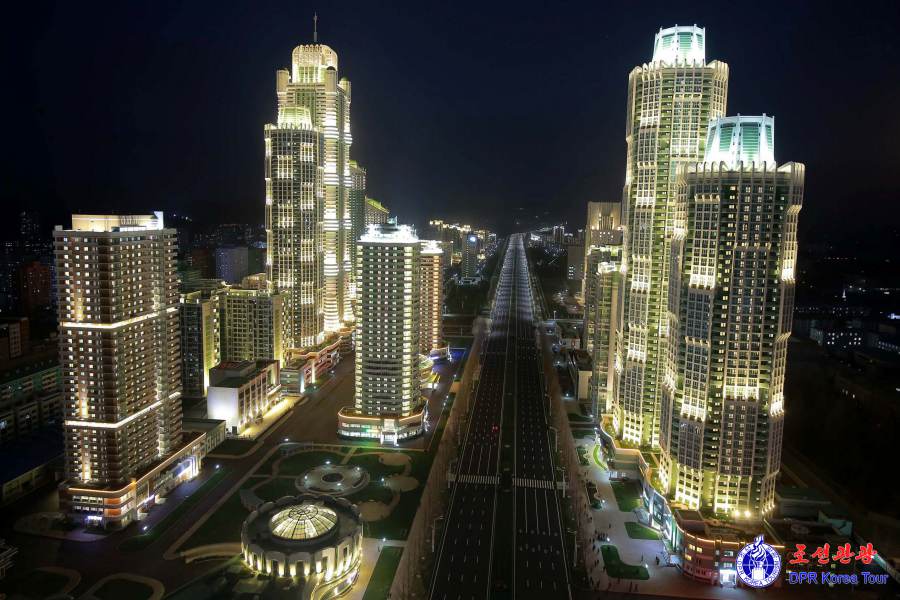



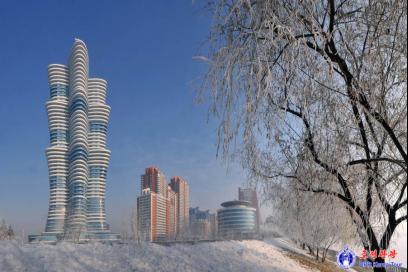

Pyongyang is situated on the middle plain in the northwest of the Korean peninsula.
The name means “flat land”.
The Taedong River, one of the longest rivers in Korea, runs through the city, and there extend vast plains on both sides of the river, dotted with low hills.
Topographically, the northern mountains keep off the cold northwestern wind in winter, and the eastern and southern plains are exposed to cool southeastern and southwestern wind, thus providing favorable conditions for activities.
The average annual temperature is 9.5℃ and the average annual precipitation is about 1 000㎜.
In spring, Pyongyang presents the scene of a sea of flowers as in Mangyongdae famous for beautiful landscape and various kinds of flowers are in full bloom on Moran Hill, which is called a garden of the capital and the streets lined up with apricot trees.
Walking along the banks of the Taedong and Pothong rivers is a good experience, and boating on the rivers adds luster to the attractiveness of the city in summer.
The scene of Pyongyang in autumn is very charming for clear and blue sky, fresh air and autumnal tints on the hills.
In winter when it snows in large flakes, the mild weather, white snow and frostworks give rise to a special feeling of the city.
Pyongyang is a city associated with time-honored history, brilliant culture, wisdom and talents of the Korean nation.
It is one of the cradles of mankind and a city of culture with 5 000-year-long history.
There remain a lot of historical relics left by the Korean ancestors one million years ago, which prove the emergence of mankind.
It was the capital of Ancient Joson (early 30th century B.C.-108 B.C.), the first state in Korea, and Koguryo (277 B.C.-A.D.668), a millennium power in the East. There are many historical relics showing the long history and brilliant culture of the Korean people, including the Mausoleum of Tangun, founder-king of Ancient Joson, and the Mausoleum of Tongmyong, founder-king of Koguryo.
After Korea’s liberation from the Japanese military occupation on August 15, Juche 34 (1945), Pyongyang began to open a new page in the history of its development as the capital of the DPRK.
In the city there is the native home at Mangyongdae where the President was born.
In the city the Workers’ Party of Korea was founded in October Juche34 (1945) and the DPRK, in September Juche37 (1948).
During the three-year-long Korean war (June 25, 1950-July 27, 1953), the city was completely ruined by bombing.
After the ceasefire, it has been turned into a youth city and the city in the park boasting of many monumental edifices, including the Tower of the Juche Idea and the Arch of Triumph.
Today Pyongyang is changing into a more magnificent and beautiful city of creation, construction and miracle day by day.
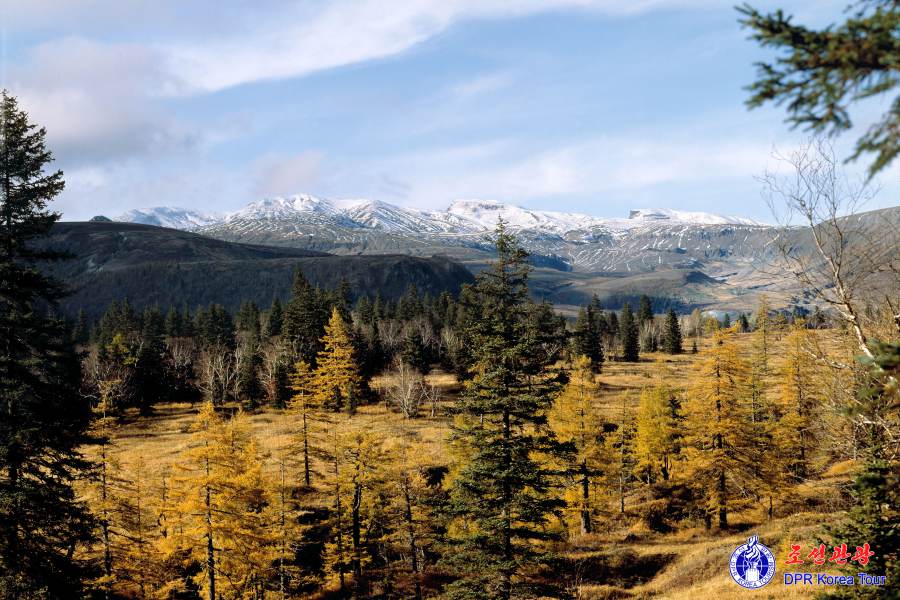
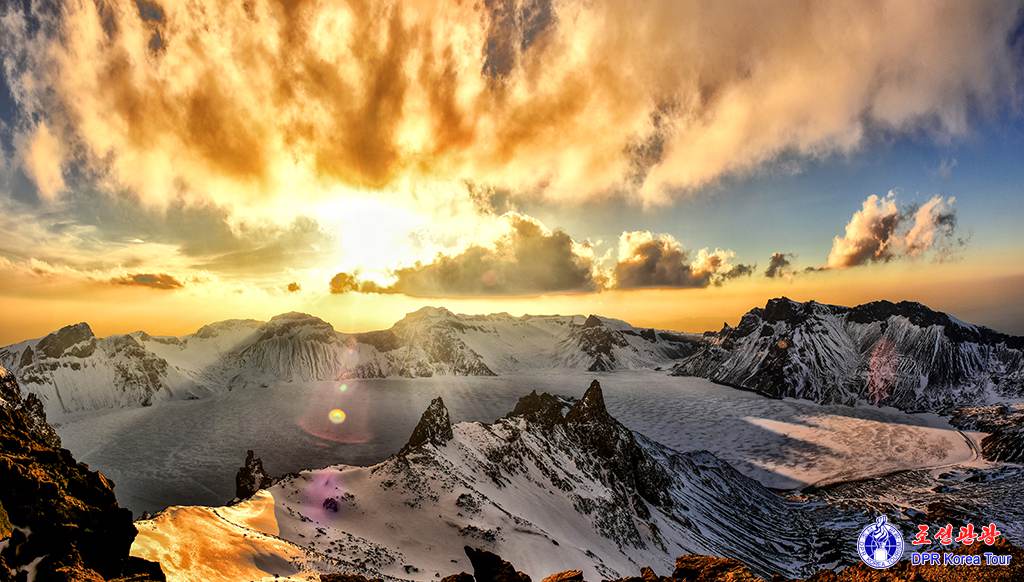
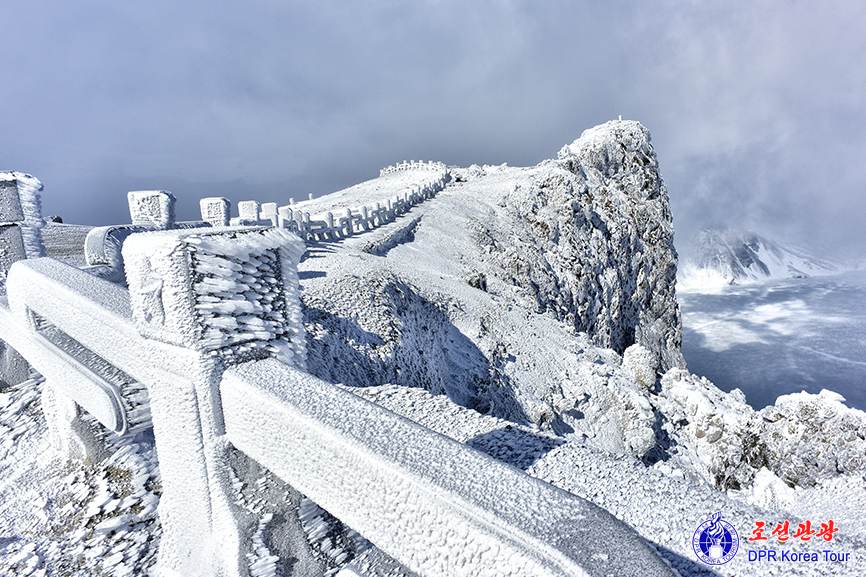
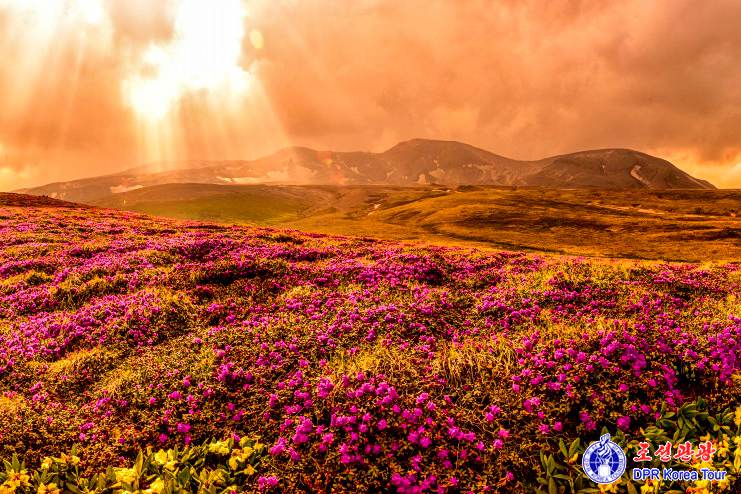




As an inland area in the northern part of Korea, it comprises the revolutionary battle sites, revolutionary sites and scenic spots in Ryanggang Province with Mt. Paektu, the highest mountain in Korea, as its axis.
The name of the province was derived from the fact that it lies at the juncture of the Amnok and Tuman rivers which find their way to the east and west seas, with Mt. Paektu as their watershed. As a mountainous area, the province is situated high above the sea.
Mt. Paektu area is a historic place where President Kim Il Sung commanded the sacred struggle against the Japanese imperialists to liberate Korea from their colonial rule, so preserved there are many revolutionary battle sites and revolutionary sites. In the area is the Paektusan Secret Camp where Chairman Kim Jong Il was born.
Mt. Paektu area, mainly covered with thick primitive forests, has many magnificent and beautiful natural sceneries and wonders, including Lake Chon on Mt. Paektu and Rimyongsu Falls. It is inhabited by many rare animals, and various species of plants grow there. It is the coldest area and the difference of temperatures between summer and winter is the greatest in Korea. The average annual temperature in Lake Samji is 0.4 ℃ and the average annual precipitation is 955 mm.
You can take a plane or a train to Mt. Paektu, but it is recommended to take a flight.

长白山国际旅行社帮助您及您的家人提供更完美的旅游顾问服务,让您体验到最尊贵的旅游服务。
公司地址:长白朝鲜族自治县东安花园八号楼西侧一层
企业电话:4006878011
服务电话:13904498495
法人电话:13904498606
